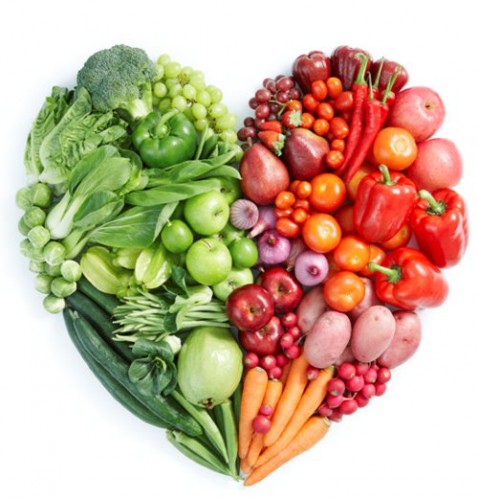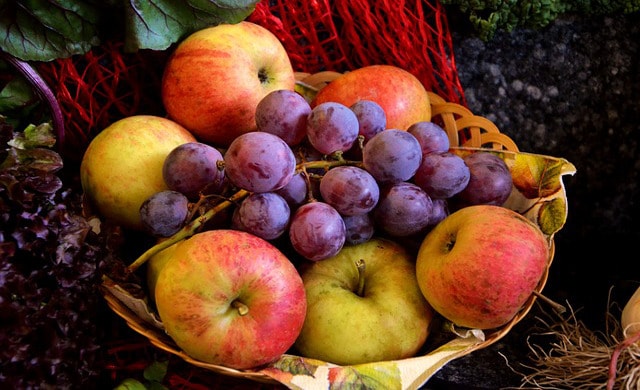We all know it’s important to eat plenty of fruit and vegetables because our parents told us it is and now we tell our own children it is. ‘But why?’ I hear your child ask. Why are they so important, how much do we need and how do I make them more appealing to my child?

Why eat fruits and vegetables?
We can’t deny that fruit and vegetables are good for us. Endless research reveals they are not only a wonderful source of fibre, vitamins, minerals and antioxidants but they are also low in fat, calories and salt. A diet low in fruit and vegetables lacks variety and makes it very difficult to meet individual nutrient requirements.
In 2008, a large trial showed that increasing intake of healthy foods, such as fruit and vegetables, led to a greater reduction in weight than reducing intake of energy-dense foods, such as chocolate and ice cream. Another study showed that children who were offered fruit more frequently were less likely to gain weight.
Food preferences established in childhood continue into adulthood so if we can encourage children to eat fruit and vegetables on a regular basis, this will reduce their risk of chronic disease later in life.
As a proverbial ‘icing on the cake’, adequate nutrition also has a significant impact on academic performance. A large study conducted in Canada found that year 5 students who had a high quality diet, which included plenty of fruit and vegetables, performed much better on assessment tasks than those with a poor quality diet.

How much do we need?
Most children in Singapore do not meet their fruit and vegetable requirements. The last National Nutrition Survey indicated that only ¼ of the adult population eat 2 or more pieces of fruit per day and, more alarmingly, less than half of Singaporean adults eat 2 or more servings of vegetables per day. There is no data available on children’s intake but if adults are not eating enough, it is more than likely that children are following in their footsteps.
Recommended Daily Intake of fruit and vegetables for children and adolescents
| Age of child (years) | Fruit(number of serves) | Vegetable(number of serves) |
|---|---|---|
| 1-3 | 1-2 | 1-2 |
| 4-7 | 1-2 | 2-4 |
| 8-11 | 1-2 | 3-5 |
| 12-18 | 2-3 | 4-8 |
| What is a serve of fruit? | What is a serve of vegetable |
|---|---|
| 1 whole medium sized fruit such as apple, pear, orange | ½ cup of cooked vegetables such as carrots, peas, cauliflower and greens |
| 2 small fruits such as fresh apricots or plums a handful of berry fruits such as grapes, strawberries or blueberries |
A cereal bowl of salad |
| ½ – 1 tablespoon of dried fruits such as raisins or apricots | 1 tomato or 7 cherry tomatoes |
| 1 slice of large fruits such as a smile of watermelon or rock melon, a wedge of papaya or pineapple or 1/2 an avocado | ½ cup of cooked legumes such as lentils, kidney beans or chickpeas |
| A glass of fruit juice (only count this as a serving once per day, since the several pieces of fruit are required to make one glass) | — |
How can we encourage our children to eat more?
Studies looking at the determinants of fruit and vegetable intake amongst children found these factors influence how much a child consumes:
- How much the parents consume
- Availability of fruit and vegetables at home
- Accessibility of fruit and vegetables (For example, watermelon cut up into pieces is more accessible than a whole watermelon)
- Shared meals – meals eaten as a family led to a greater intake of fruit and vegetables
- Hours of TV watching – more than 2 hours a day led to a lower intake of fruit and vegetables
- Eating fast food
The impression we make as parents can’t be overstated. Try the following tips to help your child eat more fruit and vegetables:
- Suggest your child tracks their fruit and vegetable intake by following the colours of the rainbow. This is a fun way to eat a variety of nutrients
- Involve your child. Ask them to help choose the fruit and vegetables when you go to the market and help prepare them for the meal. If you have space, you could even grow some of your own together
- Make eating fruit and vegetables fun! Create funny edible faces out of vegetables, organise fruit treasure hunts, provide pictures of a variety of fruit and vegetables to be coloured in or play alphabet games where they have to come up with a fruit or vegetable for each letter of the alphabet
- Eat meals as a family as often as you can. Try to be positive about your feeling towards fruit and vegetables
- Always include a piece of fruit at breakfast and this will form a healthy habit
- Offer chopped up fruit or vegetables as a snack between meals or create a snack made from fruit such as a smoothie
- Include at least 1 or 2 vegetables at both lunch and dinner. Ensure they are easy to eat, colourful and look appealing
By Vanessa McNamara, The Travelling Dietitian
A dietitian who graduated with a Masters in Nutrition and Dietetics in Sydney in 2000, Vanessa has lived and worked in Australia, the UK, India and now Singapore, where she currently resides with her husband. Passionate about both food and travel, she helps people to improve their lifestyle in a practical way whilst focusing on increasing their enjoyment of delicious, healthy food.
If you find this article useful, do click Like and Share at the bottom of the post, thank you.
Stay in touch! Subscribe to our Telegram here for our latest updates.













































